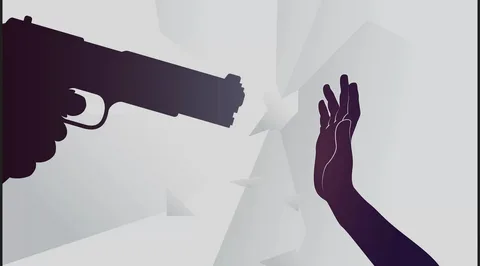More Americans died last year from gun-related injuries than any prior year on record. In Canada, gun violence experienced only a slight decrease from the year prior. As gun violence has its ups and downs, trends in gun violence highlight a lot about how guns are used and what the response is in security and government.
As we dig into the following gun violence trends, one sees a mix of positive and negative as policies, public sentiment, and behaviour change over time.
Violent crime is up, but firearm-related violent crime is down.
In Canada, violent crime is increasing at a rate of 4% annually, while firearm-related violent crime is down by a similar amount. That said, if one looks at the rate of firearm-related crime by the decade, one discovers firearm-related crime has increased by 25% compared to ten years earlier.
Gun detection technology is among the top security tools to use.
The security industry is responding to gun violence in a big way, particularly as it applies to events and schools. Gun detection technology, AI gun detection, and eliminating ineffective gun security policies are all key ingredients to producing the most effective safety and security possible, no matter the setting.
Urban areas are getting better at preventing gun violence.
The momentary downturn in gun violence annually is largely related to the hard work being put in across major cities. The best example is Toronto, where firearm-related violent crime decreased by 22% annually. Meanwhile, many remote, rural areas are seeing some of the highest rates of gun violence they have ever experienced.
The US has the highest gun death rate of most developed nations.
The US has one of the highest gun death rates in the world at 10.6 per 100,000 people, compared to France’s 2.7 gun deaths, Canada’s 2.1, Australia’s 1.0, and others.
Last year, 54% of all gun deaths in the US were suicide. This demonstrates the important need for better mental health services, specifically relating to gun ownership and the finality of perpetrating violence with a gun, regardless of whether that’s against someone else or oneself.
Gun violence is rising among children and teens.
Gun murders in the US are up by 45%, comparing this year to pre-pandemic. However, we see an even larger rise in gun violence among children and teens. It’s a stark reality for a country without a definitive plan to provide resources to curb and eliminate gun violence in these young demographics.
A history of violent behaviour is the biggest predictor of gun violence. Early onset of aggression significantly increases the risk of pursuing gun violence in the future. According to several studies, individuals with aggressive incidents earlier and more frequently are more at risk of future gun violence.
There is no clear, agreed-upon definition of ‘mass shooting’.
There is no single definition for the term ‘mass shooting.’ It is defined differently depending on the agency or organization using the term, often leading to skewed data and unclear statistical information about gun violence.
More people are aware of gun violence than ever before.
More people are worried about gun violence as a threat to their community than ever. Recent history has shown that gun violence can occur anywhere, from elementary schools to movie theatres, music festivals, concerts, sports arenas, athletic competitions, and many other events or environments.
More guns present equates to more fatalities and more risks.
Numerous studies demonstrate that the more guns in an area, the more likely a fatality will occur. The United States has roughly 393 million guns in circulation, the most of any developed nation. Americans are 25 times more likely to be killed in a gun homicide than those in similar high-income countries.
The type of gun used varies depending on the location of the crime. Handguns are the gun of choice when committing violence in urban areas and nearly everywhere. That said, in rural areas, rifles and shotguns are more commonly present.
Gun violence is more present in underserved, racialized communities.
Gun homicide disproportionately impacts racialized populations, particularly in cities. For example, black men in the US make up nearly half of all gun deaths despite being only 6% of the general population. Similar disproportionate effects are seen in Latino and indigenous communities across the continent.
Women are most at risk when there is a gun in the home.
One might say that gun violence in the United States is racist, especially because unarmed black civilians are five times more likely to be shot and killed by police than unarmed white civilians. It may also be said that guns are, unfortunately, anti-woman.
Domestic violence victims are still five times more likely to be killed when their abuser can access a gun. When an intimate partner owns a firearm, the woman is often at a much higher risk of death than in a home with no such weapon.





